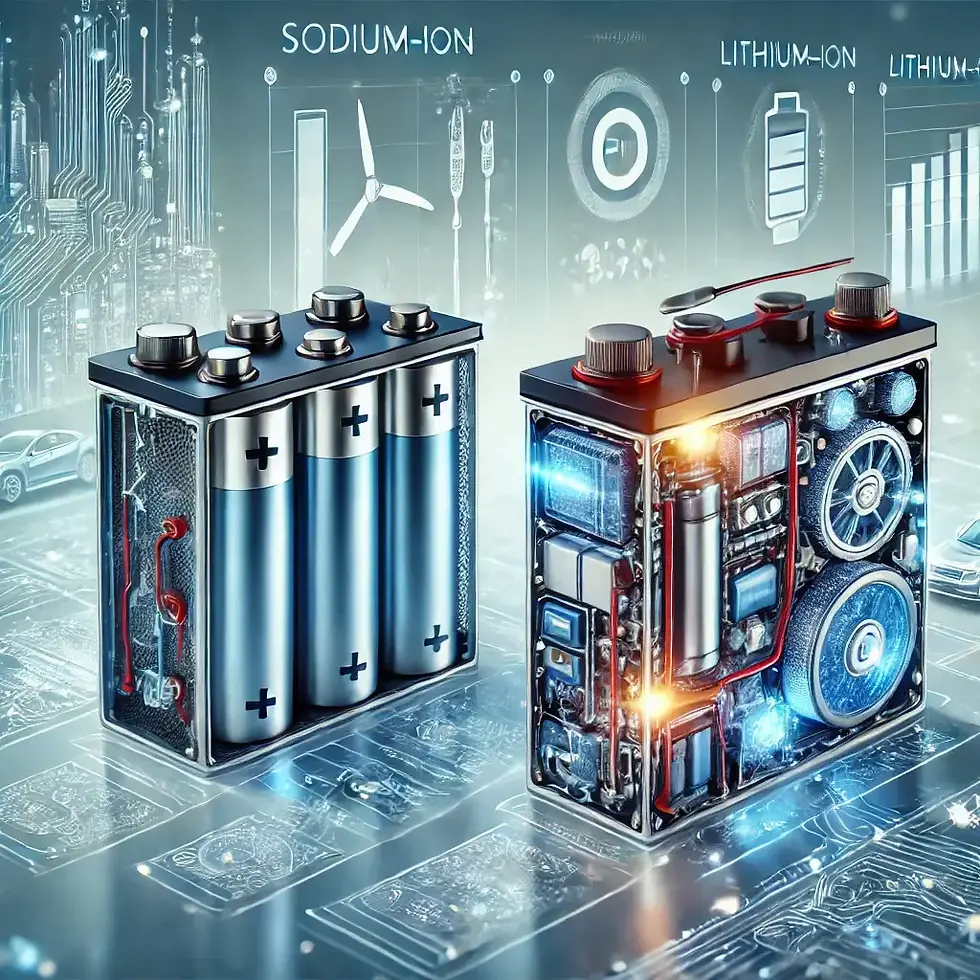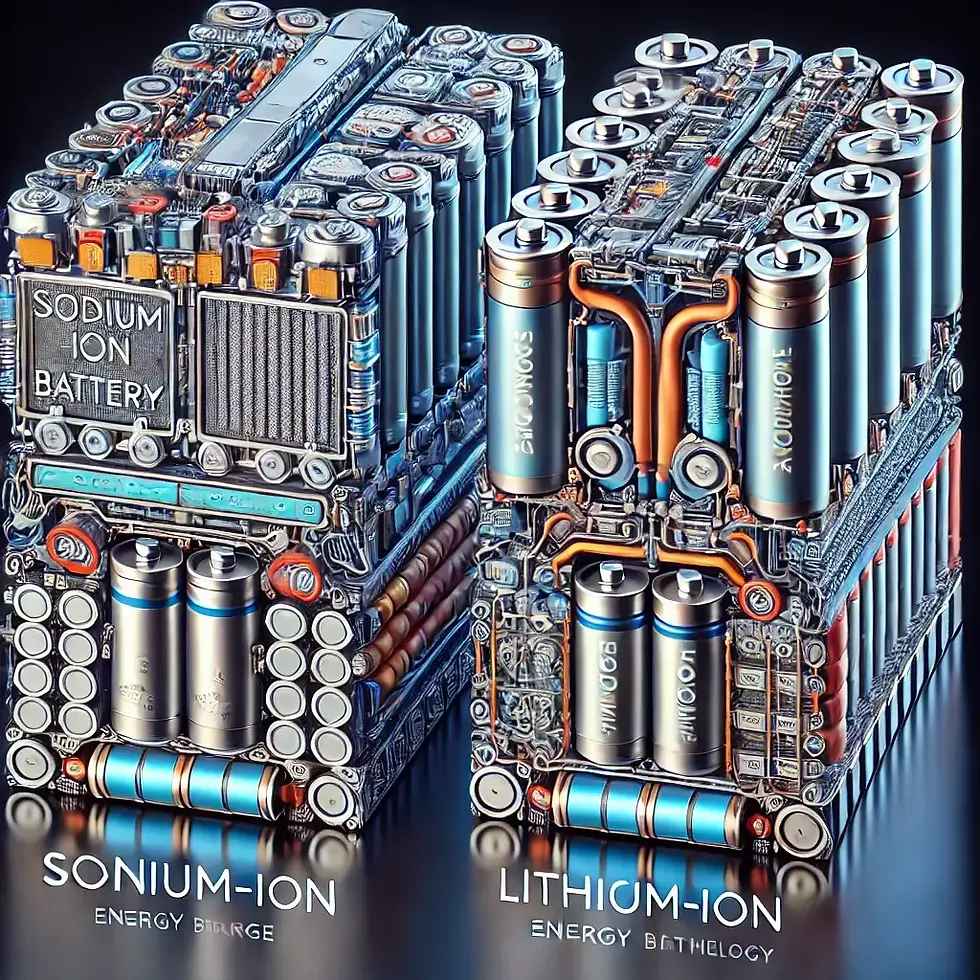Sodium-Ion Batteries vs. Lithium-Ion Batteries
- Kalyan Bhattacharjee
- Mar 21
- 2 min read
Updated: Mar 22

Introduction - Sodium ION Battery vs Lithium ION Battery
Energy storage is a crucial part of modern technology, from electric vehicles to renewable energy integration. While lithium-ion batteries (Li-ion) have dominated the market for years, sodium-ion batteries (Na-ion) are emerging as a potential alternative. This article explores the key differences between these two battery technologies, their composition, how they work, and their future potential.
How Are They Made?
Lithium-Ion Batteries
Li-ion batteries are made using lithium compounds as the active material. Their typical components include:
Cathode: Lithium-based compounds (e.g., lithium cobalt oxide, lithium iron phosphate).
Anode: Graphite or other carbon-based materials.
Electrolyte: Lithium salts dissolved in an organic solvent.
Separator: Prevents short circuits between anode and cathode.
Sodium-Ion Batteries
Na-ion batteries use sodium-based materials, which are more abundant and cost-effective. Their key components include:
Cathode: Sodium-based compounds (e.g., sodium iron phosphate, sodium nickel manganese oxide).
Anode: Hard carbon or other sodium-compatible materials.
Electrolyte: Sodium salts in an organic or aqueous solution.
Separator: Similar to Li-ion, prevents electrical shorts.
How Do They Work?
Both batteries operate on the principle of ion movement between the anode and cathode during charge and discharge cycles.
Lithium-Ion Batteries
When charging, lithium ions move from the cathode to the anode through the electrolyte. During discharge, they return to the cathode, generating electricity.
Sodium-Ion Batteries
Work similarly, but sodium ions replace lithium ions. The slightly larger size of sodium ions affects energy density and performance.
Key Differences: Sodium-Ion vs. Lithium-Ion
Feature | Lithium-Ion Battery | Sodium-Ion Battery |
Energy Density | Higher (~150-250 Wh/kg) | Lower (~100-150 Wh/kg) |
Cost | Expensive due to lithium scarcity | Cheaper, as sodium is abundant |
Availability | Limited lithium supply | Sodium is widely available |
Safety | Prone to overheating and fire risk | More stable, lower risk of thermal runaway |
Charging Speed | Fast charging capability | Slightly slower charging times |
Cycle Life | Long cycle life (~1000-3000 cycles) | Similar or slightly lower (~1000-2000 cycles) |
Environmental Impact | Mining lithium has significant environmental effects | More eco-friendly due to sodium abundance |
The Future of Sodium-Ion and Lithium-Ion Batteries
While Li-ion batteries remain dominant, the high cost and resource limitations drive interest in Na-ion alternatives. Companies like CATL and Faradion are developing Na-ion batteries for large-scale applications such as grid storage and low-cost electric vehicles.

Conclusion
Both battery technologies have advantages and challenges. Lithium-ion batteries offer superior energy density and performance, making them ideal for high-power applications. Sodium-ion batteries, on the other hand, provide a more sustainable and cost-effective solution for energy storage. As research progresses, sodium-ion technology could complement or even replace lithium-ion batteries in certain applications.
sodium ion vs lithium ion, sodium batteries, batterie sodium ion, battery sodium, sodium ion battery, sodium ion battery vs lithium ion battery, sodium ion battery vs lithium ion, sodium-ion battery vs lithium-ion battery, sodium ion batteries vs lithium ion, sodium ion batteries vs lithium ion batteries, fintech shield

Comments